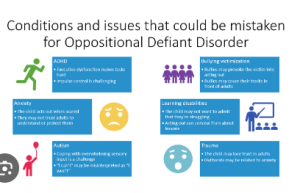Neurodevelopmental disabilities, such as attention deficit hyperactivity disorder (ADHD) and specific learning disorder (SLD), pose significant challenges to children and adolescents, impacting their cognitive functioning, academic performance, and psychosocial well-being. Understanding the unique characteristics and cognitive profiles of individuals with these disorders is crucial for developing effective interventions and support systems.
Neurodevelopmental disabilities and Child Development Evidence-Based Paper Review
In this analysis, we will delve into the article “Intellectual functioning and executive functions in children and adolescents with ADHD and SLD” by Faedda et al. (2019), which explores the similarities and differences between ADHD and SLD by examining executive and intellectual profiles. By critically evaluating the study design, sample size, data analysis methods, and strength of the evidence, this paper aims to gain insights into the implications of this research for clinical practice, the importance of specialized knowledge in neurodevelopmental disabilities, and potential shifts in perspective regarding the treatment of ADHD and SLD.
Neurodevelopmental disabilities and Child Development Evidence-Based Paper Review
This analysis highlights the significance of specialized care and tailored interventions for individuals with neurodevelopmental disabilities, ultimately contributing to improved outcomes and enhanced quality of life for affected individuals. Furthermore, an analysis of the article concurs with Wolraich et al. (2019) study as one relevant National Guideline or Best Practice Recommendation for children and adolescents. This guideline emphasizes the importance of comprehensive evaluations that consider multiple domains, including cognitive and executive functions, in assessing and managing ADHD.
Neurodevelopmental disabilities and Child Development Evidence-Based Paper Review
It highlights the need to assess for coexisting conditions such as specific learning disorders (SLD) and recommends tailored interventions based on individual strengths and weaknesses. The study conducted by Faedda et al. aligns with this guideline by analyzing the executive and intellectual profiles of children and adolescents with ADHD and SLD, contributing to the evidence base for personalized interventions and supporting the implementation of best practices outlined by the AAP.
Summary for Neurodevelopmental disabilities and Child Development Evidence-Based Paper Review

The article by Faedda et al. (2019) is a quantitative study that considers the lacking study of similarities and differences between attention deficit hyperactivity disorder (ADHD) and specific learning disorder (SLD) by analyzing the executive and intellectual profiles among children and adolescents. ADHD is a neurodevelopmental disability marked by the persistence of a pattern of inattention and hyperactivity-impulsivity that affects development and psychosocial functioning negatively.
On the other hand, SLD is a neurodevelopmental disorder linked to biology that limits school skills like writing, reading, and making calculations. The authors note the research gap in analyzing the neuropsychological profiles of children with ADHD and SLD, comparing executive and intellectual functions, even though numerous studies highlight neuropsychological deficits over multiple domains. Investigating the differences and similarities between ADHD and SLD groups helps outline interventions that are more specific to the individual child’s characteristics.
Neurodevelopmental disabilities and Child Development Evidence-Based Paper Review
The study sample included 72 children and adolescents aged between 5.1 and 15.4 years, with one group diagnosed with ADHD (36) while the other was diagnosed with SLD (36). Intellectual ability was measured using the WISC-IV, while executive functioning was measured using the NEPSY-II. Out of the six cognitive domains of NEPSY-II, the research utilized two: attention and executive functioning and memory and learning.
A series of multivariate covariance analyses and a single covariance analysis, using age and gender as covariates, were used to analyze the collected data. The study results show that the two groups were balanced by age and ethnicity, while the ADHD group had more males than the SLD group. Only 2.8 of the study population was from a different ethnic group. The results also reveal a significantly higher score for the SLD group on the NEPSY-II in various domain like inhibition and cognitive flexibility.
The ANCOVA also revealed differences in the FSIQ of WISC-IV, where the SLD group scored higher than the ADHD group. The study findings also reveal that children with ADHD are more impaired among the two groups. Ultimately, an educational and clinical intervention focused on specific executive and intellectual functioning of children and teenagers is enabled by the identification of strengths and weaknesses of the population with SLD and ADHD.
Rate and grade the article on Neurodevelopmental disabilities and Child Development Evidence-Based Paper Review
The article by Faedda et al. (2019) can be evaluated using the Johns Hopkins Nursing Evidence-Based Practice (EBP) Guidelines. The study utilized a quantitative design with a sample size of 72 children and adolescents, which meets the criteria for level III evidence. However, based on the information provided in the article, several factors suggest that it aligns with Level III evidence. The study used a non-experimental design to compare the executive and intellectual profiles of children with ADHD and SLD.
Non-experimental studies, such as comparative descriptive or case-control studies, typically fall under Level III evidence. The study also included a sample of 72 children and adolescents, 36 diagnosed with ADHD and 36 diagnosed with SLD. While sample size alone does not determine the level of evidence, smaller sample sizes are more common in Level III studies than larger, randomized controlled trials (RCTs) often seen in Level I and II studies. The study further employed MANCOVA)and ANCOVA to analyze the collected data. These statistical methods are commonly used in Level.
Child Development Evidence Based Paper Review





